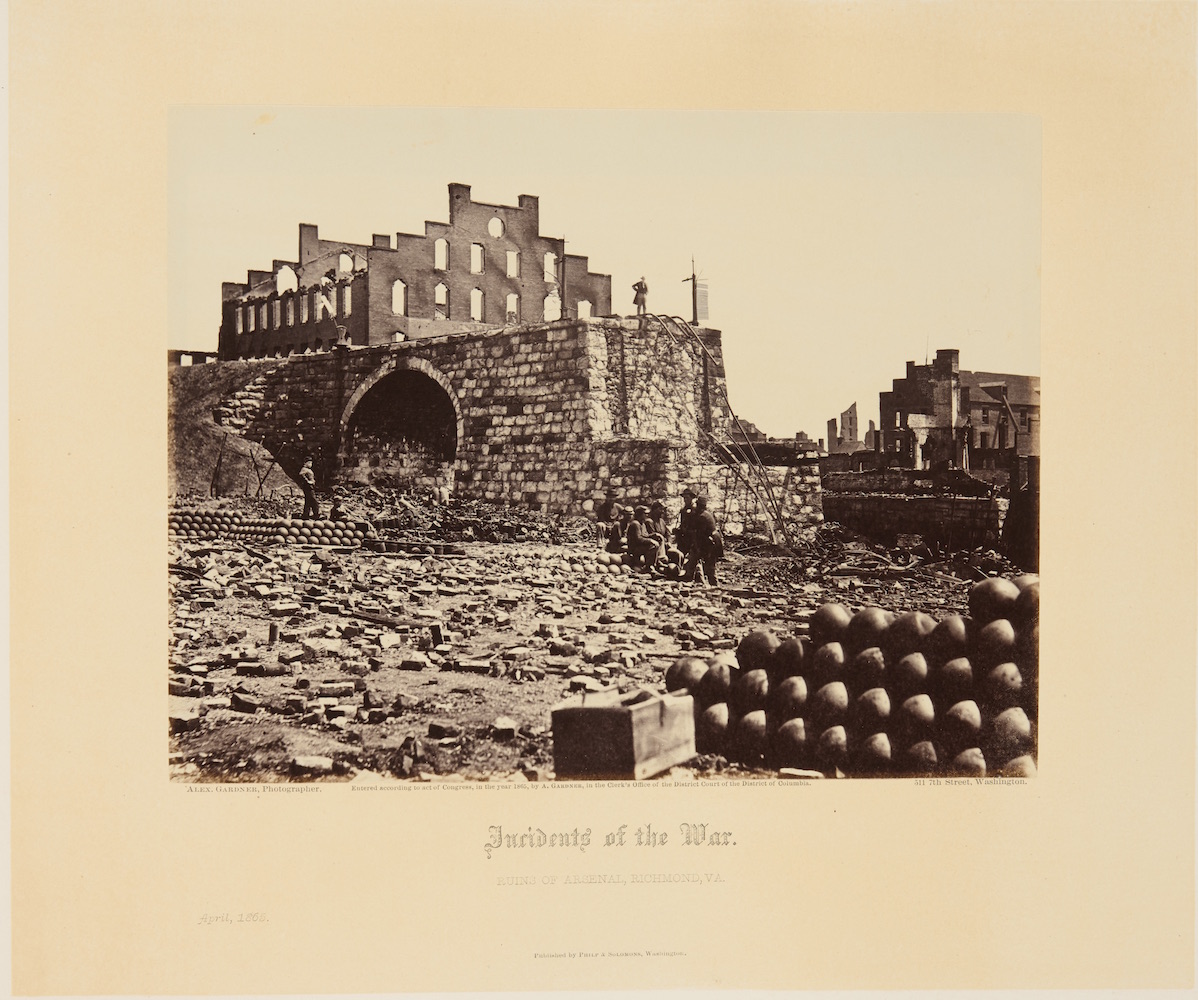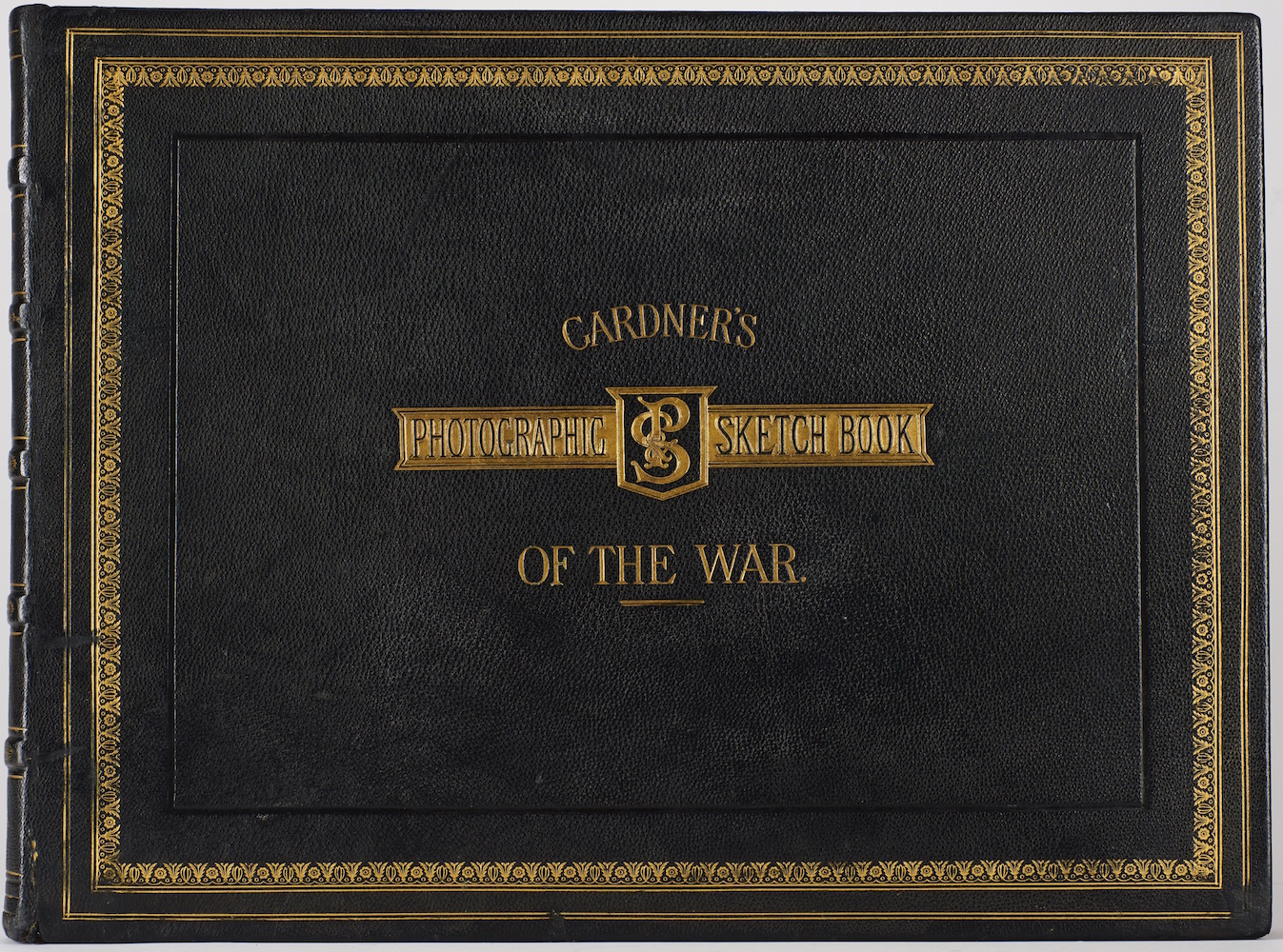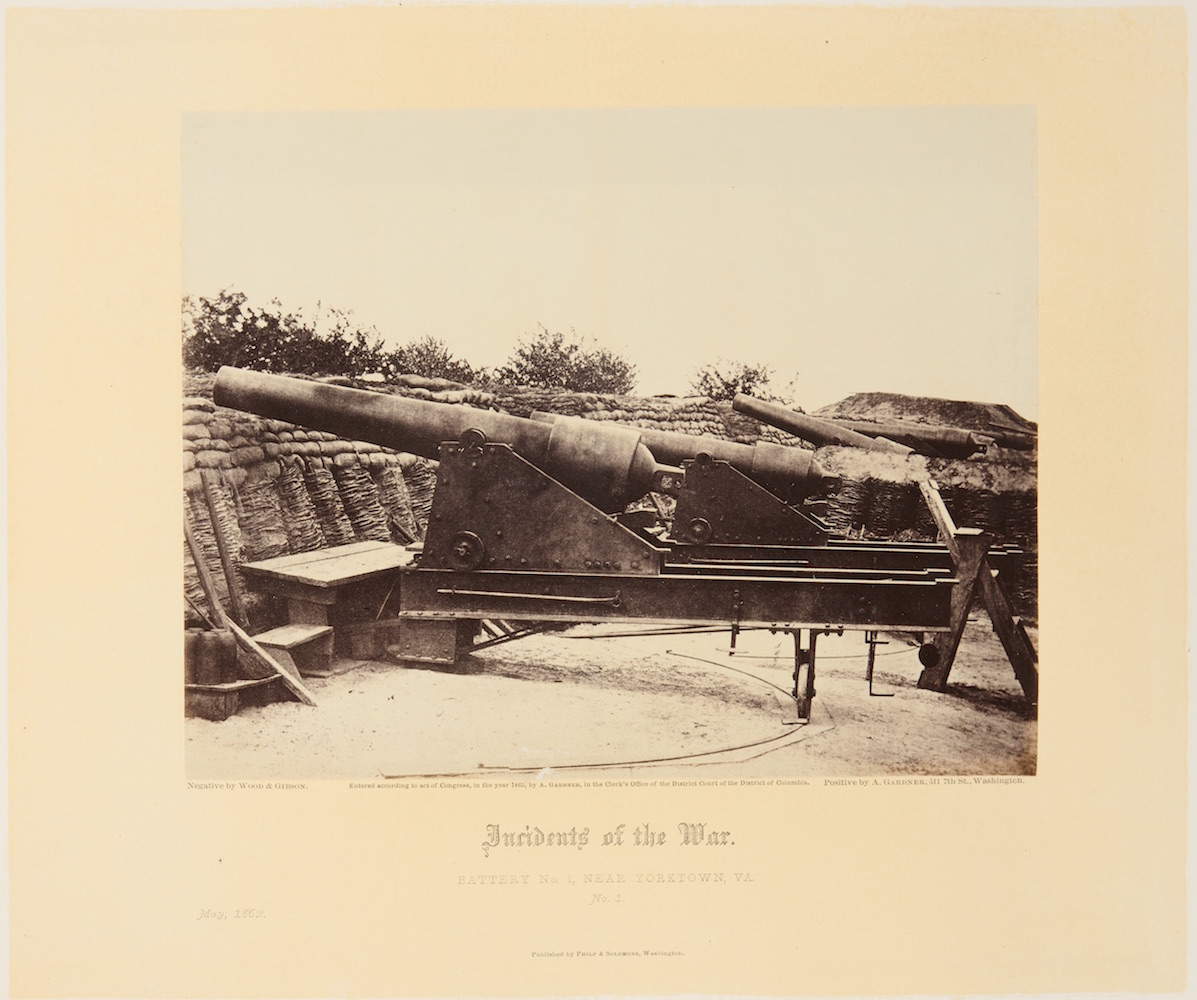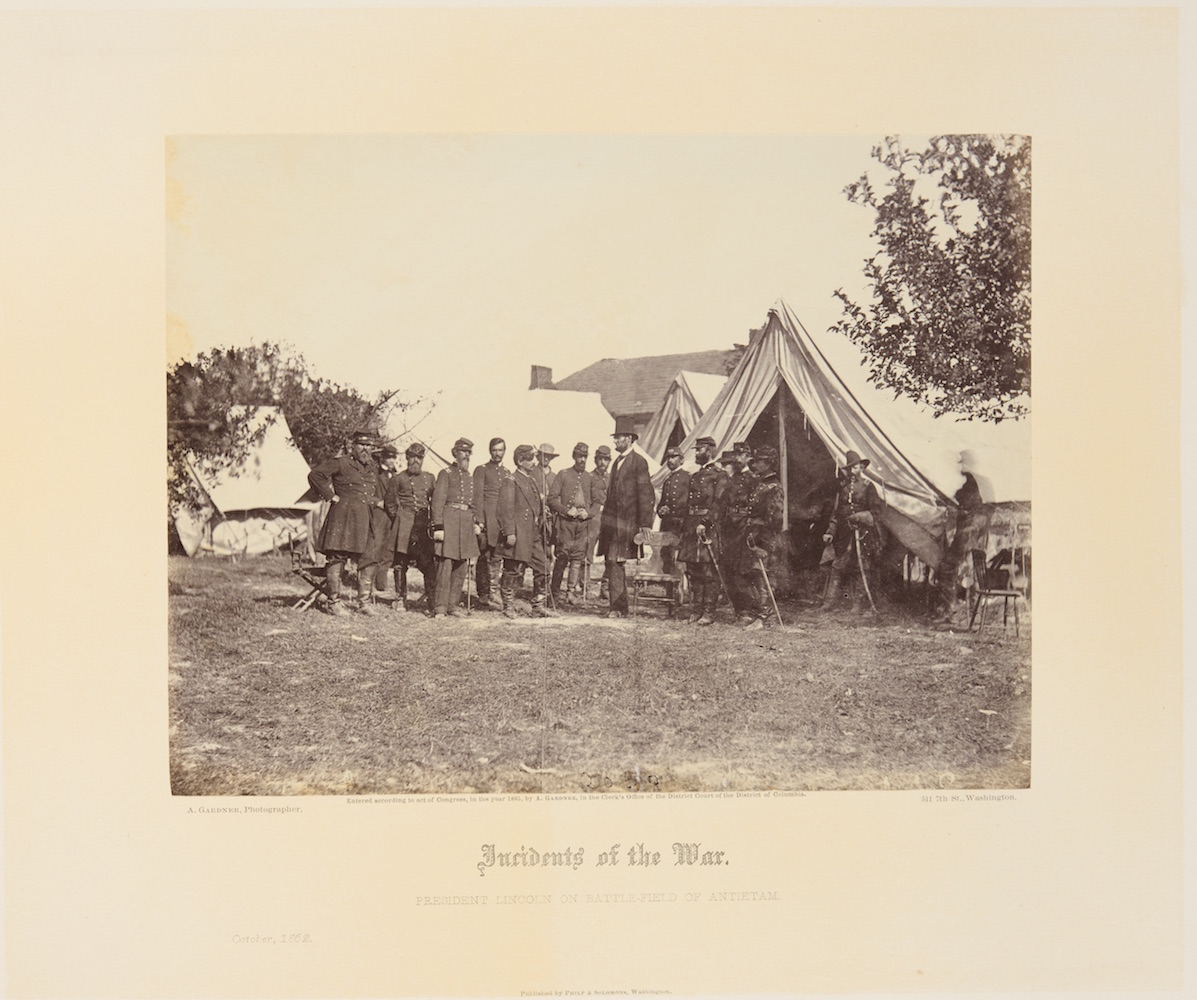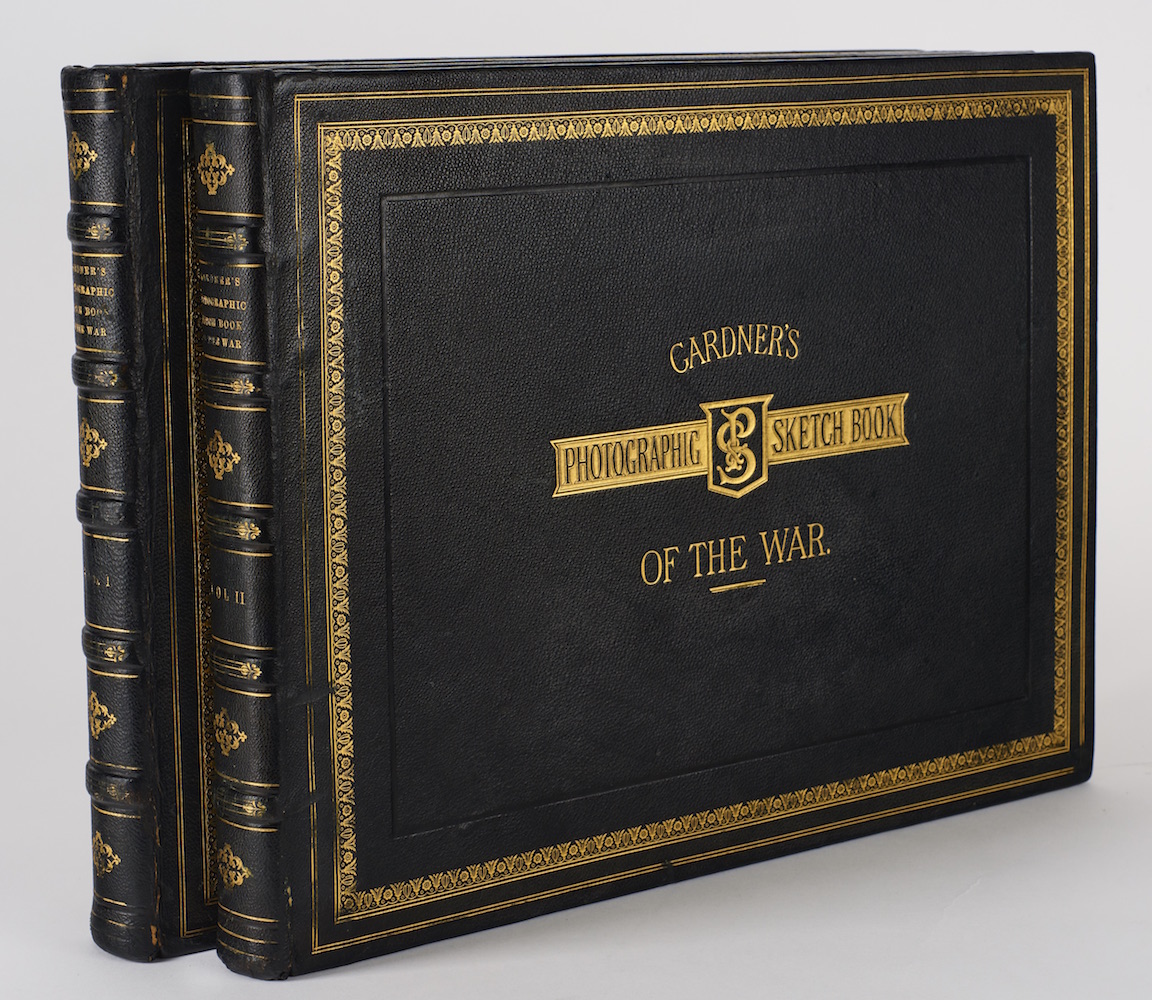“many of the most graphic and memorable Civil War images that have come down to us”
GARDNER, ALEXANDER. Gardner’s Photographic Sketch Book of the War
Washington, D.C.: Philp and Solomons, [1865-66]
Two volumes. Oblong folio (12 x 16 in.). 100 albumen prints (approx. 7 x 9 in.) mounted on larger sheets with lithographed frames and captions. Fine lithographed title pages of camp scenes. Two versions were issued, distinguishable by the printed captions on the mounts. The first issue states “Incidents of the War” in each caption, as in the present copy (the second issue omits the phase and adds plate numbers). Light wear to binding, minor damp staining to a few mounts, just touching a single print. The photographs are generally in excellent condition, typically with rich tones and good contrast, with only minor occasional fading. Original black morocco gilt. A superb set.
FIRST EDITION, FIRST ISSUE of the most famous photographically illustrated American book of the nineteenth century.
This landmark work is the most celebrated collection of Civil War photographs. Gardner’s Photographic Sketch Book of the War contains “many of the most graphic and memorable Civil War images that have come down to us” (ICP). The photographs cover the entire conflict from Manassas in 1862 to the dedication of the monument at Bull Run in June 1865. Gardner presents the photographs, each accompanied by his descriptive text, as “mementos of the fearful struggle,” recording war as it had never been recorded before.
Alexander Gardner joined Mathew Brady’s studio in the 1850s and introduced the new wet-plate collodion process there. This process was employed in the photographs of the Sketch Book. When Brady’s sight deteriorated in the 1850s, Gardner became the studio’s chief photographer. Working with the Army of the Potomac as a civilian photographer, Gardner happened to be present during the Battle of Antietam. Carrying his heavy equipment over the battlefield in the immediate aftermath of this bloodiest of battles, he captured a series of beautiful and shocking images. Within a month of publication they were exhibited at Brady’s New York gallery, where crowds waited in line for hours to view them. When Brady accepted credit for the images, as he was wont to do, the outraged Gardner resigned and set up his own studio, bringing the leading Brady photographers with him. These men, including George Barnard, David Knox, Timothy O’Sullivan, and William Pywell, contributed to the immense Photographic Sketch Book project, and they are scrupulously credited in its captions.
It is believed that about 200 copies of this lavishly produced book were published. The staggering $150 price doomed the project to financial failure. In the past 140 years many copies have been broken up for their individual photographs, and this trend will undoubtedly continue, with the result that complete sets will become ever more difficult to obtain.
This is a lovely set of this American classic, the best example we have ever seen.
George Eastman House, Imagining Paradise, 182-183. ICP Encyclopedia of Photography 221. The Truthful Lens 68.
$275,000



